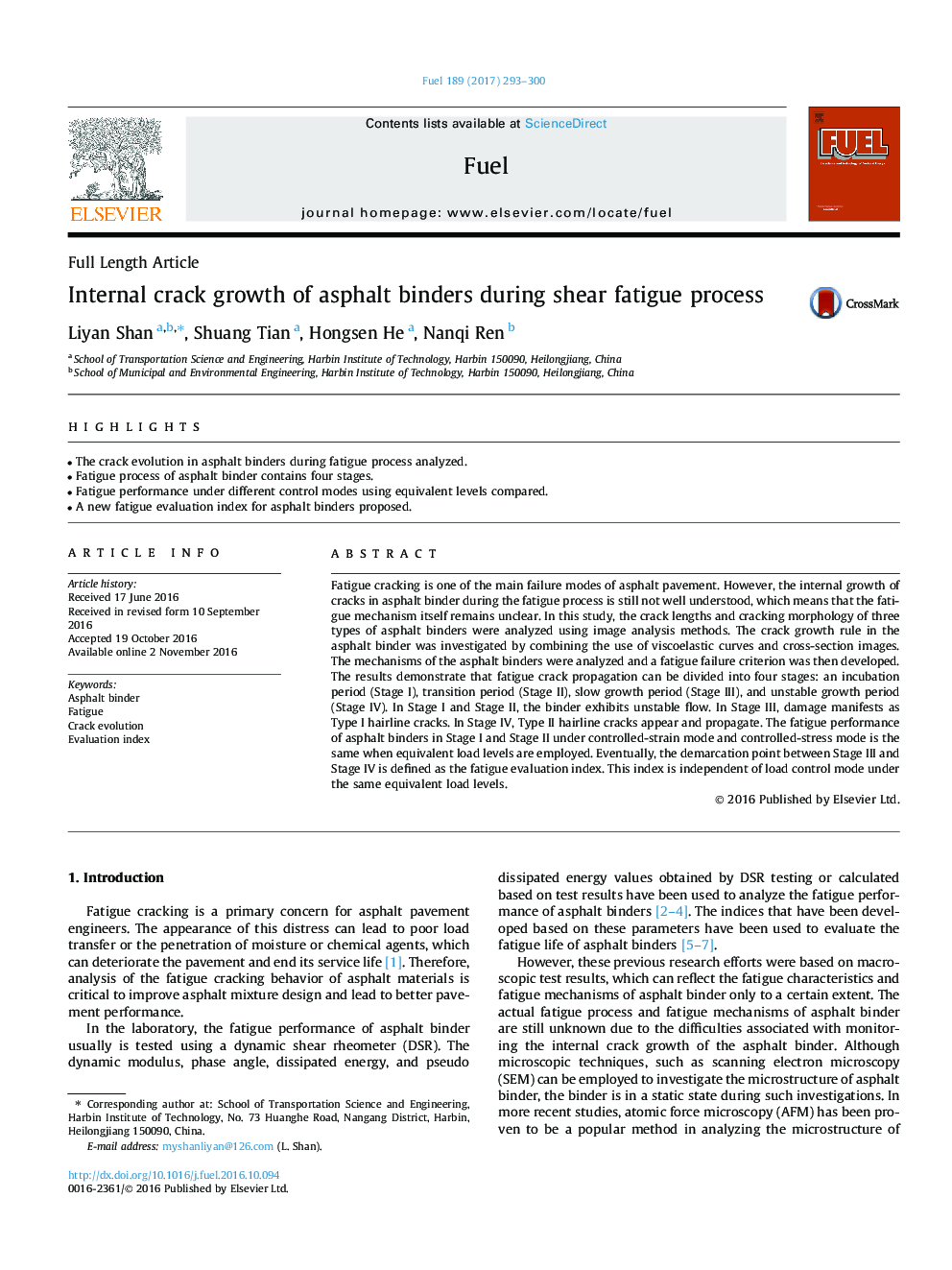| Article ID | Journal | Published Year | Pages | File Type |
|---|---|---|---|---|
| 6475688 | Fuel | 2017 | 8 Pages |
â¢The crack evolution in asphalt binders during fatigue process analyzed.â¢Fatigue process of asphalt binder contains four stages.â¢Fatigue performance under different control modes using equivalent levels compared.â¢A new fatigue evaluation index for asphalt binders proposed.
Fatigue cracking is one of the main failure modes of asphalt pavement. However, the internal growth of cracks in asphalt binder during the fatigue process is still not well understood, which means that the fatigue mechanism itself remains unclear. In this study, the crack lengths and cracking morphology of three types of asphalt binders were analyzed using image analysis methods. The crack growth rule in the asphalt binder was investigated by combining the use of viscoelastic curves and cross-section images. The mechanisms of the asphalt binders were analyzed and a fatigue failure criterion was then developed. The results demonstrate that fatigue crack propagation can be divided into four stages: an incubation period (Stage I), transition period (Stage II), slow growth period (Stage III), and unstable growth period (Stage IV). In Stage I and Stage II, the binder exhibits unstable flow. In Stage III, damage manifests as Type I hairline cracks. In Stage IV, Type II hairline cracks appear and propagate. The fatigue performance of asphalt binders in Stage I and Stage II under controlled-strain mode and controlled-stress mode is the same when equivalent load levels are employed. Eventually, the demarcation point between Stage III and Stage IV is defined as the fatigue evaluation index. This index is independent of load control mode under the same equivalent load levels.
